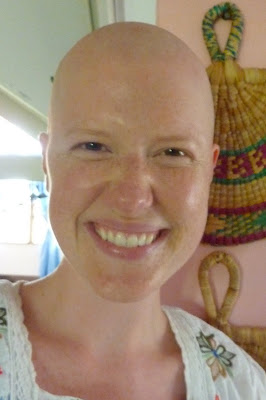Bonjour Tubab Kelsey, Saalamaalikum Diobé Lô
As a final stop on my three-week tour of different cites and villages, I stayed in a village called Taiba Ndiaye with one of my “aunts.” What a lovely and inspiring week it was! Running in the countryside, harvesting peanuts, discussing agricultural development and dancing at a baptism culminated in a memorable cultural immersion. Absorbed into the fabric of village life, I metamorphosed into Diobé Lô, my Senegalese alter ego.
My first night in Senegal, almost two months ago, one of my “brothers” named me Diobé Lô. I did not realize how effective it would be to have a Senegalese name during my journey. Few people can retain the name “Kelsey” but everyone immediately remembers “Diobé.” Senegalese people are masters at remembering people’s first and last names from the first encounter. In the U.S. it is excusable to forget someone’s name or forget meeting someone, but here in Senegal, failing to recall someone’s name is a grave social faux pas.
One of the most indispensible notions in Senegalese culture is the importance of noticing or affirming the presence of others. Notice and affirmation explain why greetings last for several minutes (or longer depending on how well you know the person) and why they are quite repetitive in nature. I have been chastised on several occasions for not greeting those around me, but I have to tell you that Senegalese salutations are one of the most tiring elements here in Senegal, especially in the villages.
Walking through the streets of Taiba Ndiaye, the majority of the people I passed would call out “Diobé Lô” and the children would cluster around me, shaking my hand and repeating my Senegalese name. I learned a handful of names during my week in the village, which is nothing compared to the hundred that I encountered. Hopefully my mind will learn to memorize Senegalese names a little better in the coming months. I missed hearing my real name but became swiftly accustomed to the Senegalese version.
One of the best moments in Taiba was the time I spent harvesting peanuts with one of my “uncles.” He owns a large field about 20 minutes by horse and cart from the village. This season he plans on harvesting about 2 metric tons of peanuts, which is impressive once you discover the reaping process. All work is done manually, by hand, horse, and rudimentary iron tools. Peanuts themselves are an arduous crop to harvest due to the manner in which they grow. Every plant you remove from the ground contains a cluster of varying sizes. These stalks must be left to dry in the sun before the peanuts are removed from the ends and sold at the market. We worked for three and a half hours in the morning, loaded up the horse cart with peanuts that would serve as the workers’ payment for the day. (Does the expression “paid for peanuts” ring a bell? Now I know the origin!) Even I received my very own sack of peanuts for my hard work. The adventure continues. According to an African proverb: “Where one loves, there is never darkness.”
Surviving in Senegal, Tip #1: Eat like the locals. In Senegal, participating in alimentary customs is extremely important. Watch the way the locals eat and do not be afraid to imitate their behaviors. Dig in with your hands at parties, shovel in your food with a spoon when you are given one, eat fast and eat a lot when invited to someone’s home or to an event, never get tired of eating Ceb bu Jen because you will eat it at least four times a week, leave the communal platter when you are finished but never get up before at least two or three others have risen first, and make sure you say that you are full and that the food was delicious.










Comments